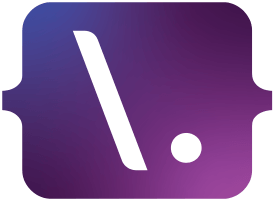
Issue 656
12th April 2024
Written by Dave Verwer
Comment
One great thing about WWDC being in San Francisco was that everything was close. It didn’t matter much which event you chose to go to after the conference finished every day, it was all within walking distance. AltConf, which grew to be a critical part of WWDC week was usually hosted across the road in the Children’s Museum 🎠, and the Layers conference joined a couple of years later. All combined, they supported many more people than the official event could accommodate.
If anything San Jose might’ve been even more convenient than San Francisco! AlfConf was hosted no more than 20 paces away from the conference centre, and there were many more venues within a few minutes walk for impromptu meetups or organised events.
We sadly haven’t seen the other conferences transition to Cupertino since in-person events started at Apple Park. Possibly because Cupertino is nowhere near as walkable as the other cities are. Possibly because the official event is only a one-day event? Or maybe it just didn’t feel quite the same since the pandemic.
So I was delighted to see this week’s announcement of a new community-run conference that will run alongside this year’s WWDC. One More Thing is a five-day event with labs, workshops, and other events. It’s being organised by J’aime Ohm with help and advice from both AltConf and Layers organisers.
The location for the conference is great, too. It’s a stone’s throw from Apple Park (the visitor’s centre is walkable from the venue), and there are plenty of coffee shops and restaurants right outside the hotel door. It’s the perfect location for an event like this.
It’s early days for a full schedule, but there is already a Keynote/SotU watch event planned for Monday and “special events” by Paul Hudson and James Dempsey on Thursday and Friday. 🫨 Proposals for talks are open and volunteering opportunities are available, too. Tickets are free and available now, but there are supporter options available for guaranteed access and for those who want to help make this event financially feasible.
I’ll do a broader round-up of everything else going on that week as we get closer to the date, but I wanted to highlight this event now, especially as I think it could kickstart the special atmosphere that WWDC week had in San Francisco and San Jose. I wish J’aime and her team all the luck with getting this off the ground!
– Dave Verwer
Sponsored Link
Join the FREE iOS Architect Crash CourseIf you’re a mid/senior iOS developer looking to improve both your skills and salary level, join this free online crash course. It’s available only for a limited time, so get it now.
Tools
Privacy Manifest MakerIt’s all well and good having to make a privacy manifest if you have one app, but what if you build apps for other people? Mick Byrne found himself with more than 60 manifests to create and did what every developer is constantly tempted to do. He built a tool to make them! 😂 You might find it useful, even if you only have one or two to create.
Code
Using your Personal Voice in an appI didn’t know apps were able to use iOS 17’s Personal Voice feature until I read this post from Ben Dodson. The person whose voice it is needs to opt-in to let apps use their voice, but once that’s done, the implementation isn’t particularly tricky, as Ben shows us here.
Splitting Up a Monolith
I’m so glad Ryan Ashcraft wrote about his recently completed refactor to split his app into multiple packages. As he says at the end of the post:
Before I embarked on this adventure, I was hoping to hear about others experiences doing something similar, but couldn’t find but a few anecdotes.
It might be the last thing on your mind when you finish a large coding job like this, but other people will find it so useful, as I am sure you will find Ryan’s experience useful, too!
Fetching OSLog Messages in Swift
I hope Ryan from the article above also reads this post from Keith Harrison as it talks about one of the issues from his refactor: Getting access to os_log data. With help from some example code from Peter Steinberger, Keith writes some code to bring logging data into a SwiftUI view.
Swift 6 upgrade Preparation
Today’s issue is full of real-world stories, and I love that! This time, it’s Michael Link from Jamf on how they are already preparing for the Swift 6 language mode. He has written up a whole load of advice on how they solved some of the issues they faced when switching on the compatibility checking feature in Swift 5.10
Jobs
Framework Developer @ PSPDFKit – Design API that will affect hundreds of apps, and create UI used by millions of users. Collaborate globally in a small team working on the leading document SDK for iOS, macOS and visionOS. Make the most of a flexible schedule, and attend annual retreats at exciting places around the world. – Remote (Anywhere)
Senior iOS Engineer - Voloco @ Resonant Cavity – Voloco is the best mobile recording studio in the world! Small profitable company with an Engineering driven culture. We ship with minimal process and meetings. You’ll work closely with the founders, who still regularly commit code. – Remote (within US timezones) with some on-site work (United States in CA or MN)
Don’t forget to post any open positions you have available on iOS Dev Jobs!
And finally...
It’s not hard to see why it got the nickname! 🗑️
